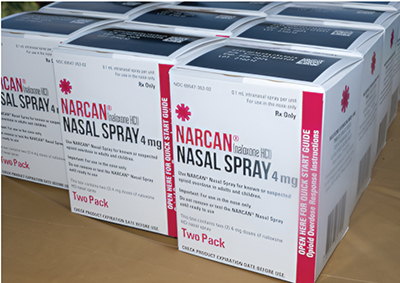By Tracie Gardner and Daliah Heller
On Dec. 8, the air was crisp as Kimberly Douglas made her way to her son Bryce’s gravestone in National Harmony Memorial Park in Landover. It’s been nearly 18 months since she lost the 17-year-old to a fentanyl overdose. On this day each year, known as Worldwide Candle Lighting Day, families light candles honoring loved ones gone too soon, like Bryce. This day of remembrance is a stark reminder of the urgent need to prevent similar tragedies.
The pain of the day Kimberly lost her son is seared into her soul. She worked at her home office in Bowie in the early afternoon. Bryce was home early from school and napped in his bedroom, just one room away. When Kimberly found him unresponsive, she frantically searched her home for naloxone, a medicine that reverses an overdose and prevents death. In her panic, she couldn’t find it. It wasn’t until later, through tears of grief and disbelief, that she discovered the naloxone — in Bryce’s pocket. He had it all along.
This country’s overdose epidemic has generated a large and active ecosystem of advocacy groups, support organizations, and grieving parents. But Kimberly finds she is often the only Black parent engaged. She has started her own Facebook group, Black Moms Against Overdose, seeking a safe place for Black families whose loved ones overdose. She prays more Black parents will step forward, join the fight, and be part of the solution.
Over the past five years, a staggering half million people overdosed in the United States. But recent reports suggest a steady upward trend over two decades is reversing. The latest data from the CDC shows a 17% decline in deaths from September 2023 through August 2024.
Over the past decade, however, deaths have skyrocketed in Black and Indigenous populations, and now overdose rates have begun to diverge by race. A recent analysis of CDC data from the O’Neill Institute shows that through 2023, in many states, while deaths were leveling off and even declining among white populations, they were still rising in Black and Indigenous populations.
Why have Black communities not experienced the same decrease in overdose deaths? Through our work nationwide, we found that critical preventive information and resources often don’t reach Black communities. We see two main problems: first, information and resources are not promoted or distributed effectively in Black communities, and second, fallout from America’s destructive war on drugs still affects Black communities.
For example, access to the lifesaving medication, naloxone, can reduce overdose deaths. But efforts to expand naloxone distribution have not sufficiently reached Black and Indigenous communities. A modeling study shows overdose deaths among Blacks and Hispanics would dramatically decrease if their access to naloxone were at the same level as whites. Intentional collaboration with community leaders by local and state governments and local health providers can ensure access to naloxone is equitable and will save lives.
Despite the reality that levels of drug use are relatively uniform across racial groups, the opioid-driven overdose crisis has been widely represented as predominantly impacting white communities, leaving Blacks less informed. Drugs popularized in hip-hop culture, like Percocets and lean (codeine), aren’t cast as opioids. Many people are unaware that ingredients such as fentanyl are widespread in the drug supply, increasing risk across the board.
The legacy of the racist war on drugs, which subjected Blacks to community-level criminalization, unequal sentencing, and mass incarceration, wields a lasting influence. Services and public health messages directed at people who use drugs are less impactful for those who fear being stigmatized by a connection to drug use. Messages that can save lives are not being heard. We need to address the stigma of drug use to improve health for all communities, and especially for those historically targeted for drug-related harm.
As a visible advocate, Kimberly fights stigma by providing Black families a space to grieve and take action. Rallying Black voices into this work is crucial to turning back the tide on overdoses and pushing against calls for harsher penalties. The misguided drug policies of decades past have created lingering damage that Black communities still struggle to overcome.
The time for action is now, and community leaders play a vital role. Local governments should establish and support partnerships with Black community leaders to share overdose prevention information and naloxone resources with local communities. Engagement is especially critical now, to ensure equitable access to naloxone and reduce disparities and overdose deaths for everyone.
Naloxone is easy to use and available for free from most local health departments and from a growing number of community partners in cities and towns across the country. It is also available for purchase over the counter at any pharmacy.
The key to saving a life with naloxone is administering it as soon as you recognize any sign of an overdose. Anyone who is in community with someone who uses drugs — family, friends, local businesses, neighbors, and associates — can be activated and prepared to help.
With community partners, we are launching a seven-city “Naloxone in Black” media campaign in late March to promote access to the lifesaving medication.
Every overdose death is a preventable tragedy. With naloxone in hand, you can save a life.
Tracie Gardner is the executive director of the National Black Harm Reduction Network. Daliah Heller is VP of Overdose Prevention Initiatives for Vital Strategies. This article was first published exclusively by the Washington Informer.

